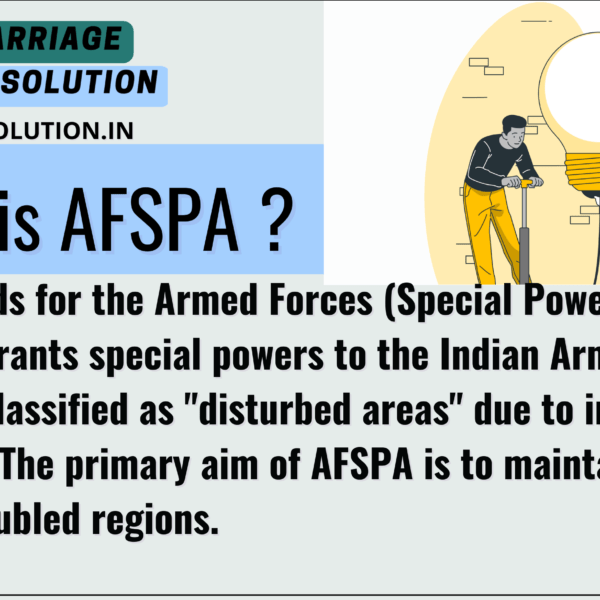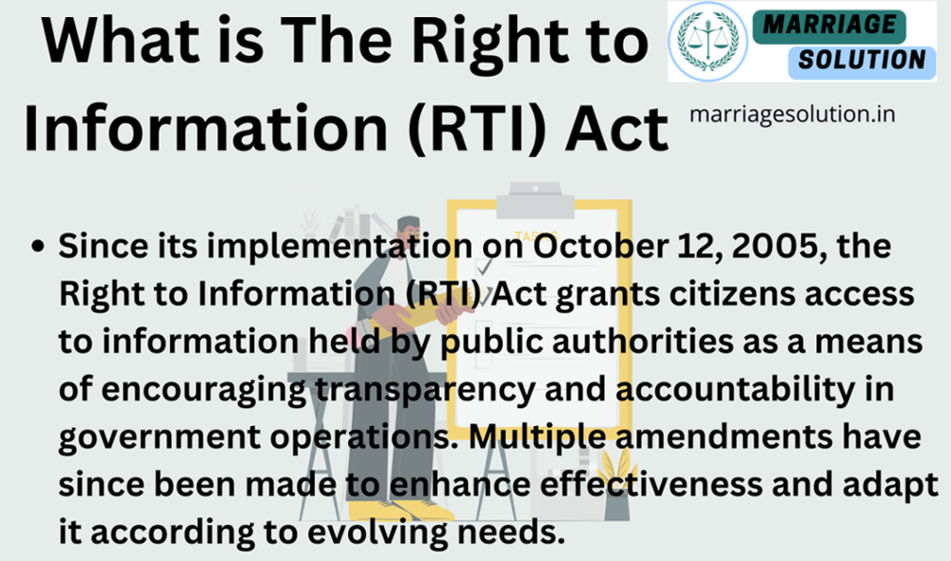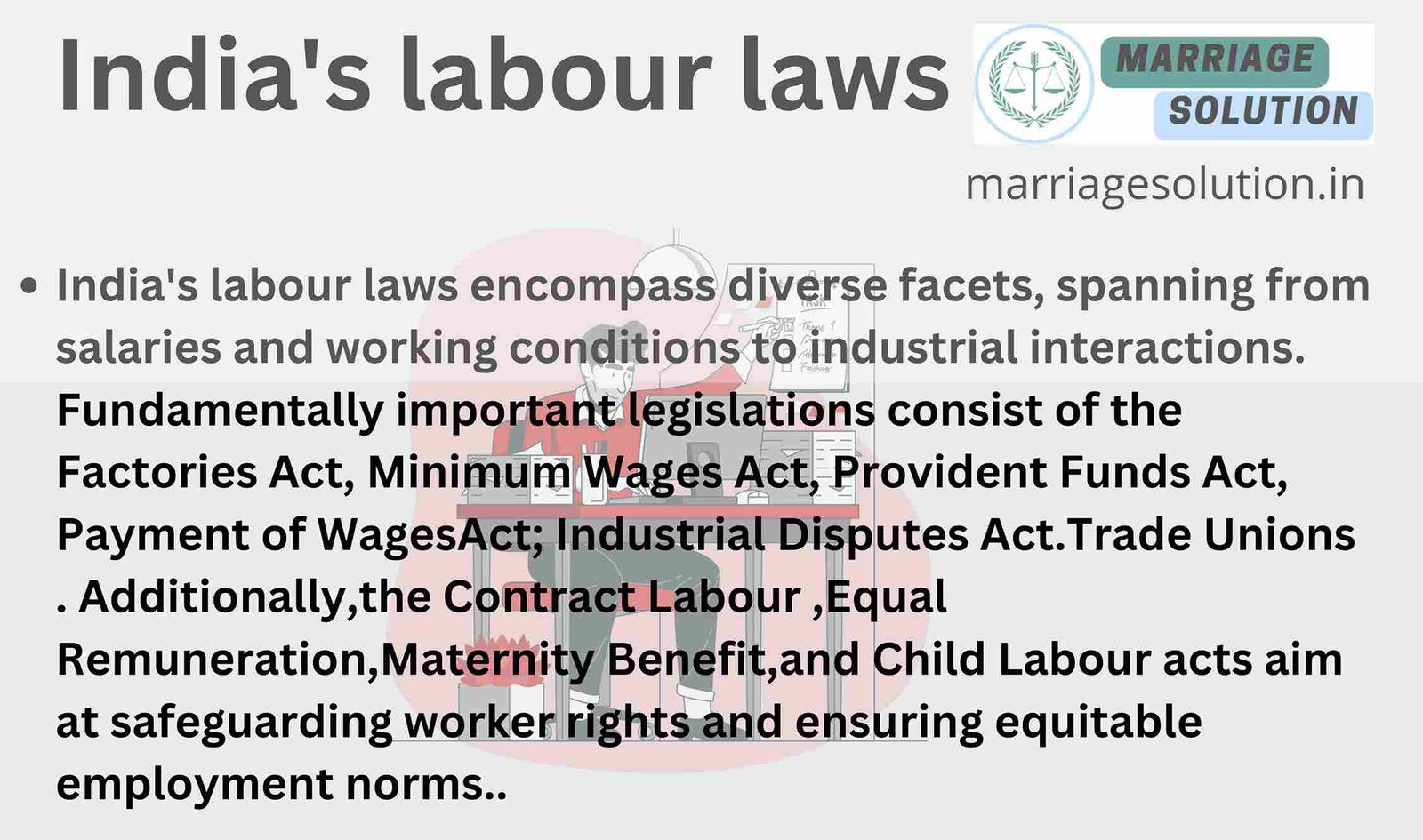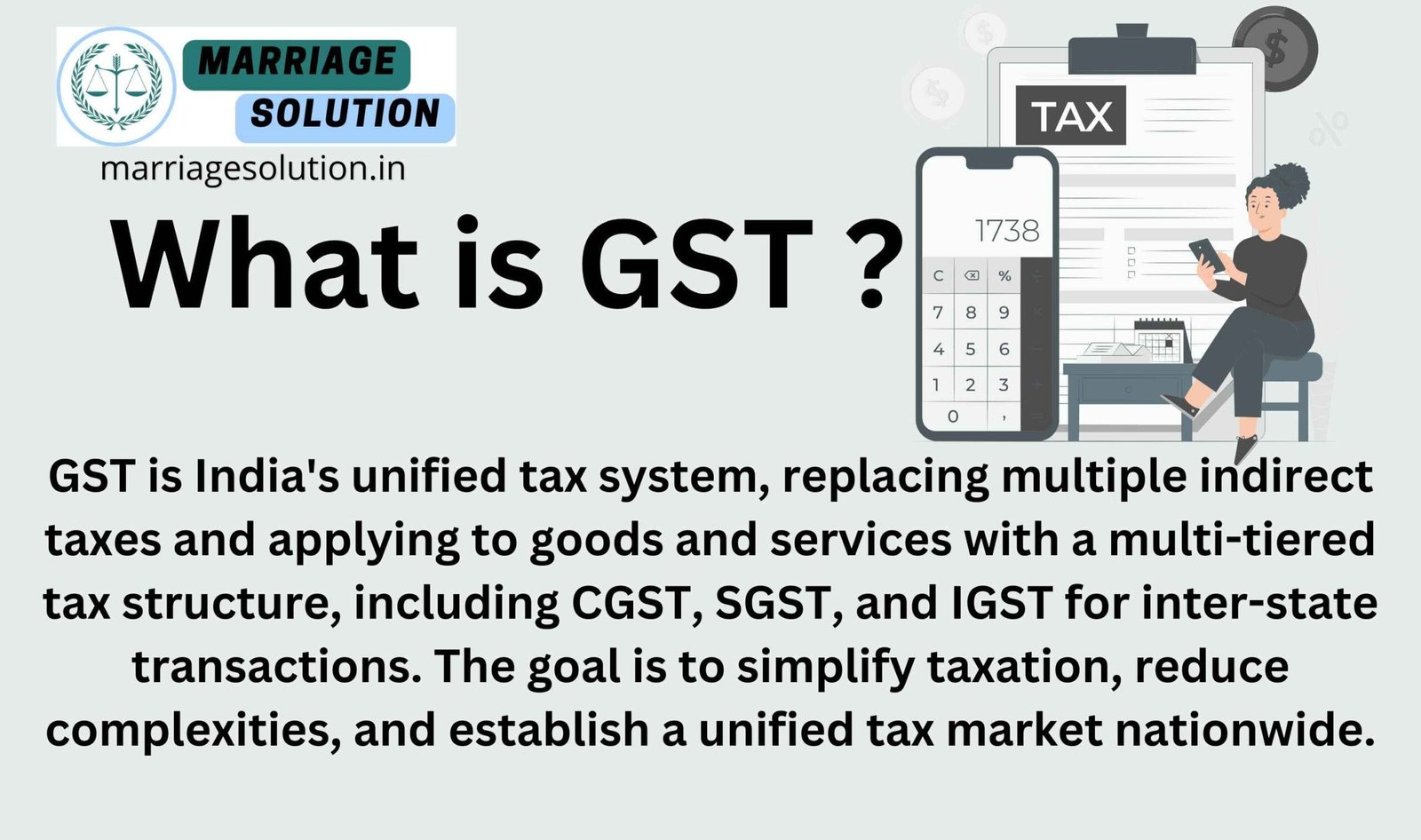Introduction of 133 IPC
IPC Section 133 deals with the abetment of assault by a soldier, sailor, or airman on their superior officer while the officer is performing official duties. This law ensures discipline and hierarchy within the armed forces by punishing those who encourage or assist in such offenses. The offense is taken seriously as it threatens order and command structure in the defense forces. Anyone found guilty under IPC 133 can face imprisonment of up to three years, a fine, or both. This law applies to both military personnel and civilians if they are involved in abetting the assault.
- Introduction of 133 IPC
- What is IPC Section 133 ?
- Section 133 IPC in Simple Points
- IPC Section 133 Overview
- 10 Key Points of IPC Section 133
- 1. Protecting the Military’s Discipline and Order
- 2. Applies to the Army, Navy, and Air Force
- 3. The Superior Officer Must Be on Duty
- 4. Abetment is the Main Crime, Not the Assault Itself
- 5. Serious Punishment for the Crime
- 6. Covers Both Military Personnel and Civilians
- 7. Ensuring a Strong Military Command Structure
- 8. Preventing External Influence on Military Personnel
- 9. Special Legal Provisions for Military-Related Crimes
- 10. Maintaining National Security and Public Confidence
- Examples of IPC 133
- IPC 133 Punishment
- 133 IPC bailable or not ?
- Section 133 IPC case laws
- Case 1: The Air Force Officer Assault Case
- Case 2: The Army Camp Riot Case
- Case 3: The Naval Officer’s Assault Incident
- Case 4: The Political Influence Case
- Case 5: The Civilian Contractor’s Role in a Military Attack
- Section 133 IPC in short information
- 133 IPC FAQs
- If you need support with court proceedings or any other legal matters, don’t hesitate to reach out for assistance.
What is IPC Section 133 ?
IPC Section 133 makes it a crime to encourage or assist a soldier, sailor, or airman to attack a superior officer who is performing official duties. The law ensures discipline and order in the armed forces by punishing anyone who promotes violence against commanding officers.
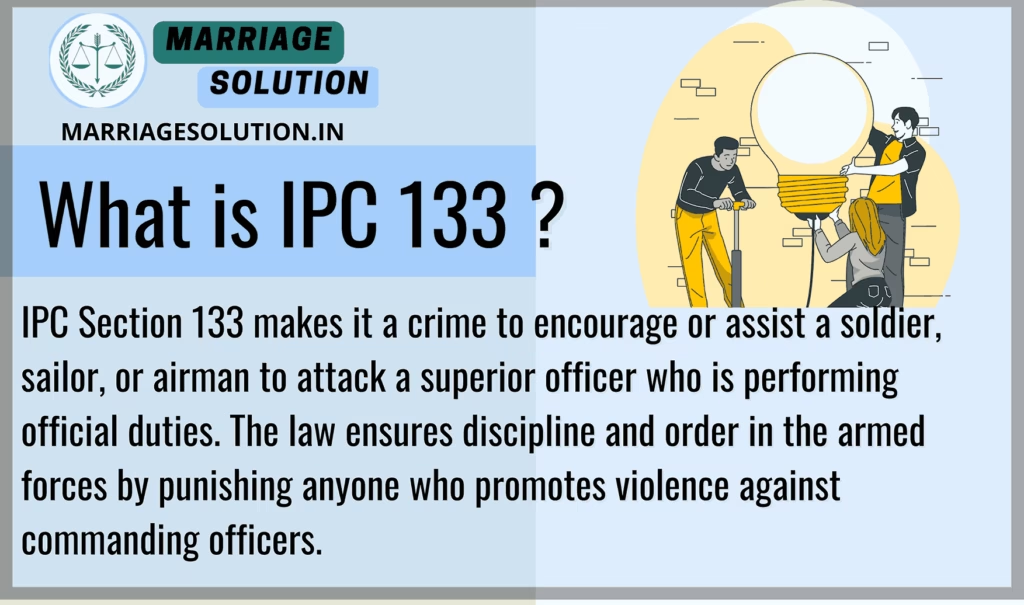
Section 133 IPC in Simple Points
- Encouraging Assault is a Crime
IPC 133 makes it illegal to encourage, assist, or support a soldier, sailor, or airman in attacking their superior officer. Even if the person did not attack the officer themselves, just helping or provoking the act is punishable. - Applies to All Armed Forces
This law applies to all three branches of the Indian Armed Forces – Army, Navy, and Air Force. If anyone abets an attack by a member of any of these forces against a superior officer, they can be punished under IPC 133. - Superior Officer Must Be on Duty
The superior officer must be performing official duties at the time of the assault. If an officer is off duty and an attack happens due to a personal issue, IPC 133 may not apply. The law protects officers while they are executing their responsibilities. - Both Military and Civilians Can Be Punished
A person does not have to be in the military to be charged under IPC 133. Even a civilian who encourages or assists a soldier, sailor, or airman in attacking their superior officer can be punished. - Imprisonment and Fine as Punishment
A guilty person can face imprisonment for up to three years and may also have to pay a fine. The court decides the amount of the fine based on the seriousness of the crime.
Section 133 IPC Overview
IPC 133 plays a crucial role in protecting the military structure and preventing acts of violence against superior officers. By penalizing abetment (encouraging or helping in an attack), the law ensures that discipline within the armed forces is never compromised. The strict punishment, covering both military personnel and civilians, serves as a strong deterrent against attempts to disrupt military order. The law helps in maintaining national security, preventing external influence, and ensuring a strong command structure in India’s armed forces.
10 Key Points of IPC Section 133
1. Protecting the Military’s Discipline and Order
The military functions on strict discipline and obedience. If soldiers, sailors, or airmen are encouraged to attack their superior officers, it could lead to chaos and weaken national security. IPC 133 ensures that anyone who abets such an act is punished to maintain law and order in the armed forces. The law acts as a safeguard against any rebellion within the defense forces. Without this legal protection, soldiers might act on personal grudges or external influence, leading to instability. Superior officers must have the authority to enforce discipline without fear of assault. This section ensures that no individual can create unrest within the military by provoking violence.
2. Applies to the Army, Navy, and Air Force
IPC 133 is not limited to the Army alone; it also covers the Navy and Air Force personnel. This makes the law applicable to all three branches of India’s defense forces. This broad scope is necessary because discipline is equally important in all sectors of the military. Any act of violence against a superior officer in any branch weakens the structure of command. Whether it is an army soldier, a navy sailor, or an airman, if someone abets them to assault their superior, they will be punished under this section. This ensures uniformity in military law, reinforcing discipline in every part of the armed forces.
3. The Superior Officer Must Be on Duty
The law specifically applies when a superior officer is performing their official duties. If an officer is attacked while executing his responsibilities, it qualifies as an offense under IPC 133. However, if a soldier fights with an officer in a personal matter outside duty, it does not fall under this section. This distinction is crucial because military laws are meant to protect the chain of command in official functions. A dispute outside work might be handled under regular criminal laws, but not under IPC 133. This ensures that the law is applied fairly and only in situations where military discipline is at stake.
4. Abetment is the Main Crime, Not the Assault Itself
IPC 133 punishes the person who encourages or helps in committing the assault, not necessarily the one who physically attacks the superior officer. Even if a person does not directly engage in the assault but plays a role in influencing it, they can be held guilty. For example, if a civilian provokes a group of soldiers into attacking their officer, the civilian can be charged under this law. This is because encouraging an assault can be just as dangerous as carrying it out. The law ensures that individuals cannot escape punishment by simply acting from behind the scenes.
5. Serious Punishment for the Crime
IPC 133 prescribes strict punishment, which can be up to three years of imprisonment along with a fine. The imprisonment can be either simple or rigorous, depending on the court’s decision. This strong punishment serves as a deterrent, discouraging people from provoking soldiers to commit violence. Without such a provision, discipline in the military could be easily disturbed. The fine is an additional penalty to ensure that the guilty person bears financial consequences as well. The law takes such offenses seriously because any attack on a superior officer threatens the command structure of the armed forces.
6. Covers Both Military Personnel and Civilians
The section applies to anyone who abets an assault on a superior officer, not just military personnel. This means that even civilians, if found guilty of influencing or provoking a soldier to attack, can be punished under this law. For example, if a political leader, journalist, or activist incites soldiers to turn against their commanders, they can face legal consequences. This is an important provision because threats to military discipline do not always come from within. External forces, including foreign influences or anti-government elements, may try to disrupt military order, and IPC 133 helps prevent such risks.
7. Ensuring a Strong Military Command Structure
The military operates through a strict hierarchy where orders must be followed without question. If soldiers start attacking their officers due to external influences, it can lead to the collapse of this structure. IPC 133 ensures that military leadership remains strong and effective. This law helps in preventing conflicts between officers and subordinates, which could otherwise weaken India’s defense system. A strong command structure is necessary for national security, and this law plays a crucial role in preserving it. Without such legal protection, military authorities would find it difficult to maintain discipline and obedience.
8. Preventing External Influence on Military Personnel
External forces such as enemy agents, political figures, or radical groups may try to create disturbances within the armed forces. If they succeed in provoking soldiers to turn against their superiors, it could lead to a national security crisis. IPC 133 ensures that no person can manipulate military personnel into committing acts of violence against their officers. By imposing strict punishments, the law acts as a safeguard against such dangerous influences. It ensures that military personnel remain loyal to their duty and are not swayed by external pressure. This provision is crucial for maintaining stability within the armed forces.
9. Special Legal Provisions for Military-Related Crimes
Crimes involving military personnel are treated differently from regular criminal cases due to their sensitive nature. IPC 133 is one such special provision designed to address the unique needs of the armed forces. In addition to IPC, military laws such as the Army Act, Navy Act, and Air Force Act may also apply in these situations. These laws ensure that cases of assault on superior officers are handled with the seriousness they deserve. IPC 133 works alongside military laws to create a legal framework that protects discipline and order in the defense forces.
10. Maintaining National Security and Public Confidence
When soldiers follow the chain of command, the country remains secure and stable. If there are frequent cases of assault on superior officers, it could weaken the military and create distrust among the public. IPC 133 ensures that such incidents are rare by imposing strict penalties on abetment. The law reassures citizens that the armed forces are well-disciplined and capable of protecting the nation. It also prevents any internal rebellion or mutiny that could threaten India’s security. By maintaining strict discipline, this law contributes to the overall stability and effectiveness of the defense forces.
Examples of IPC 133
✅ Example 1: A civilian activist tells a group of soldiers that their commanding officer is corrupt and should be attacked. If the soldiers follow this suggestion and attack their officer, the activist can be punished under IPC 133 for abetment.
✅ Example 2: A navy sailor is angry at his superior for a disciplinary action. His friend convinces him to attack the officer while he is giving orders. The friend, even if they did not attack, can be punished under IPC 133 for encouraging the crime.
IPC 133 Punishment
IPC 133 prescribes two types of punishment for abetment of assault on a superior officer:
- Imprisonment – A person found guilty under this section can face up to three years of imprisonment. This imprisonment can be of either rigorous (hard labor) or simple type.
- Fine – The offender is also liable to pay a fine in addition to the prison term. The court decides the amount of the fine based on the severity of the offense.
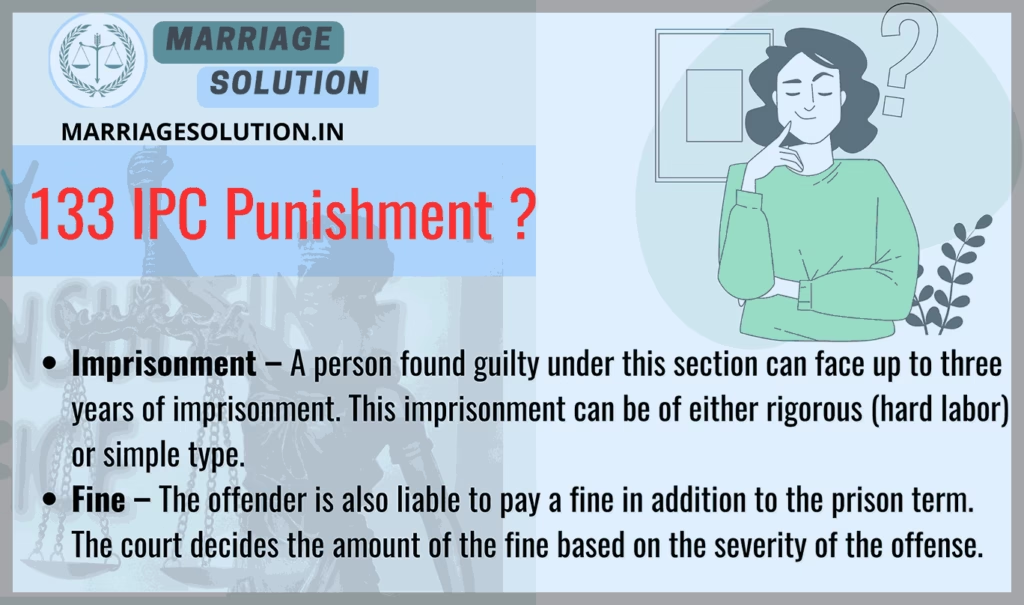
133 IPC bailable or not ?
IPC Section 133 is a non-bailable offense. Since it involves abetment of assault on a superior officer in the armed forces, it is treated as a serious crime. The court decides whether bail should be granted based on the case details.
Section 133 IPC case laws
Case 1: The Air Force Officer Assault Case
Case Details:
A senior officer in the Indian Air Force was physically attacked by a group of junior airmen while carrying out his official duties. Investigations revealed that a civilian activist had influenced the airmen by spreading false rumors about the officer’s alleged misconduct. The activist encouraged them to take matters into their own hands, which led to the assault.
Court’s Decision:
✔ The court ruled that the activist had abetted the offense under IPC 133, even though they were not part of the military.
✔ The accused airmen received two years of imprisonment, while the activist was sentenced to three years and a fine for inciting violence.
✔ The court emphasized that external influences must not interfere in military matters.
Case 2: The Army Camp Riot Case
Case Details:
In a border security camp, some soldiers were instigated by an ex-army personnel to attack their commanding officer. The former soldier had personal grievances against the officer and convinced the group that they were being mistreated. The soldiers, believing his words, assaulted the officer, causing serious injuries.
Court’s Decision:
✔ The former soldier was found guilty of abetment under IPC 133 and sentenced to three years in prison.
✔ The soldiers involved in the attack received one year of imprisonment and a fine.
✔ The court ruled that personal grudges cannot be allowed to influence the discipline of the armed forces.
Case 3: The Naval Officer’s Assault Incident
Case Details:
A junior naval officer was frustrated with the strict rules imposed by his superior. A colleague convinced him that physical retaliation would be justified as an act of “self-defense.” Encouraged by this, the officer attacked his superior while on duty. The superior officer suffered injuries, and an internal investigation revealed that the colleague had played a crucial role in provoking the attack.
Court’s Decision:
✔ Both the attacking officer and his colleague were charged under IPC 133.
✔ The attacking officer was sentenced to two years of imprisonment, while the colleague received three years for abetment.
✔ The court ruled that encouraging physical violence against a superior is a serious offense, even if it is verbal persuasion.
Case 4: The Political Influence Case
Case Details:
During a political rally, a political leader publicly urged military personnel to defy their senior officers and take action against them. A group of soldiers, influenced by the speech, physically assaulted their commanding officer in a military training camp. The leader denied direct involvement, arguing that he only expressed his views.
Court’s Decision:
✔ The court ruled that public speeches inciting violence against military officers amount to abetment under IPC 133.
✔ The political leader was sentenced to three years of imprisonment and a heavy fine.
✔ The soldiers received a lesser punishment (six months in detention), as they were misled.
Case 5: The Civilian Contractor’s Role in a Military Attack
Case Details:
A civilian contractor working inside a defense base frequently complained about a superior officer’s behavior. He told a group of army personnel that the officer was corrupt and that attacking him would be the only way to get justice. Influenced by these claims, the soldiers ambushed the officer and beat him severely.
Court’s Decision:
✔ The civilian contractor was the main accused and was sentenced to three years in prison under IPC 133.
✔ The soldiers received one year of imprisonment but were given some leniency as they were misled.
✔ The court stressed that outsiders should never interfere with military matters.
Section 133 IPC in short information
| IPC Section | Offense | Punishment | Bailable/Non-Bailable | Cognizable/Non-Cognizable | Trial |
|---|---|---|---|---|---|
| IPC 133 | Abetment of assault by a soldier, sailor, or airman on a superior officer in duty | Up to 3 years of imprisonment and fine | Bailable | Non-Cognizable | Trial by Magistrate |
133 IPC FAQs
What is IPC Section 133?
IPC Section 133 punishes anyone who abets an assault by a soldier, sailor, or airman on their superior officer while the officer is performing their duty.
What is the punishment for IPC 133?
The punishment under IPC 133 includes up to three years of imprisonment, a fine, or both, depending on the severity of the offense.
Can a civilian be punished under IPC 133?
Yes, if a civilian provokes, encourages, or assists in an assault on a military superior, they can also be charged under IPC 133.
Is IPC 133 a cognizable offense?
Yes, IPC 133 is a cognizable offense, meaning the police can arrest the accused without prior approval from the court.
If you need support with court proceedings or any other legal matters, don’t hesitate to reach out for assistance.
Court or any other marriage-related issues, our https://marriagesolution.in/lawyer-help-1/ website may prove helpful. By completing our enquiry form and submitting it online, we can provide customized guidance to navigate through the process effectively. Don’t hesitate to contact us for personalized solutions; we are here to assist you whenever necessary!
Right to Information RTI act :Your Comprehensive Guide (Part 1)
The Right to Information (RTI) Act : Explore the essence of the Right to Information (RTI) Act through this symbolic image. The image features legal documents, emphasizing the importance of transparency and accountability in governance. The scales of justice represent…
What is Article 371 of Indian Constitution ?
Article 371 of the Indian Constitution grants special provisions to specific states and regions within India, addressing their unique historical, social, and cultural circumstances. These provisions aim to accommodate diverse needs and protect cultural identities within the constitutional framework.
Indian Labour law : Your Comprehensive Guide (Part 1)
The purpose of labour laws is to safeguard employees and guarantee equitable treatment at the workplace, encompassing aspects such as remuneration, security, and perks. These regulations establish a secure ambiance by imposing minimum wage requirements, ensuring factory safety measures are…
GST :Your Comprehensive Guide (Part 1 – Understanding the Basics)
The Goods and Services Tax (GST) is like a big change in how we pay taxes in India. It started on July 1, 2017, and it’s here to simplify things. Before GST, we had many different taxes, and it could…

